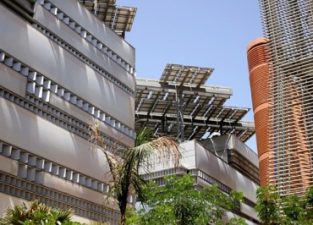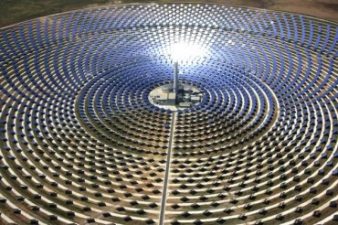The search for fresh water is on and United Arab Emirates-based Masdar Institute of Science and Technology believes that its new collaboration with the region’s National Research Foundation (NRF) will help detect fog and monitor the precipitation for the expansion of renewable fresh water sources as well as what the company said will improve safety and transportation monitoring when fog events occur.
The idea is simple. By following the fog the company hopes that it can then develop nano-composite material with the goal of harvesting water from the atmosphere, i.e. from the fog.
The location of the UAE on the edge of a very warm sea on the one side and hot and dry desert on the other create the optimal conditions of inland fog forming. The afternoon sea breeze –almost a daily event in the UAE’s coastal areas – transports moisture inland, then at clear sky conditions at night, the large surrounding desert radiates heat very efficiently and temperatures fall quickly. The rapid cooling of accumulated inland moisture during the night facilitates conditions for fog development.
According to the Emirates official news agency WAM and a press release issued by Masdar, the projects are being split into two separate actions to work together on boosting the use of fog, detection and grabbing of fresh water.
To the unsuspecting eye, the Emirates might seem like a country not prime for fog and its tracking and ultimate development of the precipitation, but as a result of the UAE being located between a hot and dry desert to the west and a warm sea to the east, it results in massive fog accumulation inland, which Masdar believes can push the creation of new sources of water development.
Detection is important for safety reasons: Dr. Hosni Ghedira working on the project said: “On an average, there are 20 occurrences of dense fogs each year in the UAE, mainly during the December-January period. Heavy fog events reduce visibility, causing flight delays and fatal highway accidents. An accurate detection of fog will improve the safety and efficiency of transportation systems.”
Masdar Insitute President Fred Moavenzadeh told WAM, “The two groundbreaking research projects will bring sustainable benefits to the UAE and other parts of the world.
“Our projects remain relevant to Abu Dhabi and the UAE while offering benefits to regions with similar climatic conditions. With the support of the UAE leadership, we have sustained the momentum in achieving innovative solutions. We hope the global community will benefit from the outcomes of the two research projects currently being undertaken at Masdar Institute,” he added.
Dr. Raed Hashaikeh says it’s a welcome alternative to collecting fresh water in the water scarce region: “Desalination is the main source of fresh water in the UAE. The ambient atmosphere in the UAE contains a large quantity of water which makes it a potential renewable source of fresh water. Our research work will focus on developing advanced surfaces to enhance the capture and collection of tiny fog droplets. Through materials that can increase water capture efficiency, we aim to exploit fog occurrences as a renewable source of fresh water in the UAE.
National Research Foundation Research Program Manager Ahmed Alosi said: “The collaborative effort with Masdar Institute will bring benefits to the community. As directed by the UAE’s leadership, NRF promotes research activities that survive international peer review and contribute to social and economic benefits in the UAE.
“We hope the research projects on fog by Masdar Institute faculty will result in tangible outcome to support sustainable development in the country and the region.”
Masdar has become the leading renewable energy company in the Gulf region, with massive investment and development of the solar and wind energy sectors in the past 6 years since its founding. Green Prophet’s Tafline Laylin will be heading there in January for a week of sustainable events.
According to Masdar, it “aims to be a global leader in commercially-viable clean energy and sustainable technologies — and to secure the Emirate’s continued leadership in the evolving global energy market.”
With this new ambitious fog effort, it could once again show itself capable of innovation and alternative energy development that leads the global energy push away from traditional sources.





While it’s wonderful to read about this proposal here, it isn’t new, and it might even be the nano-structured fog collecting surfaces have been developed for five years already: http://inhabitat.com/charles-patons-teatro-del-agua/.
In fact, Nature provided the plans to biomimicry-focused engineers at MIT over eight years ago, in the form of the Namib Desert Beetle, Stenocara gracilipes, (who developed it all when humanity was not even so much as “a glimmer in the eye” of evolution: https://en.wikipedia.org/wiki/Namib_Desert_beetle .
Also see: http://www.rsc.org/chemistryworld/News/2005/August/31080502.asp.
Credit where it’s due, please 🙂
Common sense should inspire everyone to live in balance with their environment, but instead so many men desire a large family to make them powerful the biosphere is now approaching collapse from 7 billion people and growing on this already heavily polluted and slowly shrinking planet. So, turning fog into water would work for people consciously living in balance, but not for an exploding mass of ambitious corporations.